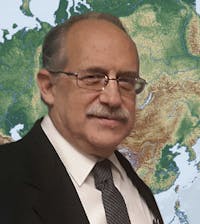Case study 7: tephrosia fallow
- Regenerative Agriculture
- Regenerative Croplands
- Smallholder Farming
- Equatorial Afrotropics
- Afrotropics Realm
One day, a smallholder farmer was walking to market in the town of Bamenda when some beautiful flowers caught his eye. He gathered a few seeds to plant in his flower garden back home in the village.
After a year or so, he noticed that the soil under this plant, called tephrosia, had become really fertile, so he guessed it might do the same for his fields. People in this area of Cameroon still have enough land to allow for a four-year natural fallow. Customarily, they let the natural vegetation grow on their fields for four years, so it will increase the organic matter in the soil. When the field is at its most fertile, they then plant rice, their most valuable crop and the one that demands the most fertile soil. They plant maize the second year, and the third year, when the fertility is largely spent, they plant cassava, which is very resistant to poor soils. The following year, they start letting the natural vegetation restore the soil again.
Our smallholder experimenter waited until the natural fallow was to start growing, and scattered some tephrosia seeds across the ground. Sure enough, the tephrosia grew 2 m tall, and within one year, he was amazed to find that the soil was just as fertile as after four years of natural fallow. This meant that he could plant crops on his field for three years and then only fallow it for one year. Instead of only being able to plant crops on a piece of land three out of every seven years, he could now plant his crops three out of every four years. In effect, he had nearly doubled the amount of the land he could grow crops on every year.
Another of the many advantages of gm/ccs is that they are very noticeable. None of our friend’s neighbors could help but notice that he was growing this silly 2-mt-tall flowering bush in his field when it was time to fallow it, or that he was able to cut those bushes down after only one year and produce a good crop of rice again. So they started walking off with a little of his seed to plant their own “improved fallows.” By the time I visited Cameroon eight years later, over 1,000 farmers were using the tephrosia fallow. A few years ago, I received news that there were over 2,000 farmers doing it. No outside program was ever involved, nor even much of a process of farmers teaching farmers. The technology spread mostly by example.
This sort of spontaneous spread is what we need to get the world’s Laureanos moving toward RA just as soon as possible. We need very simple, visible, inexpensive, minimum-labor, easily understood and easily copied technologies that provide very obvious, significant, desirable and short-term but lasting benefits. When we find such technologies, they will propagate themselves. No outside program helped spread the tephrosia fallow to over 2,000 farmers; it grew legs and walked across the landscape by itself. In fact, smallholder farmers in Thailand and Vietnam, also on their own, have developed and spread almost identical tephrosia-based improved fallows.
Of course, some day the people around Bamenda will not have enough land to fallow it for even one year. Then, they could intercrop the tephrosia with either their maize or cassava, and thereby avoid ever fallowing at all. I mentioned that possibility to some of the farmers when I was there. Very likely, this idea has also grown legs by now.
.jpg?auto=compress%2Cformat&w=1440)


